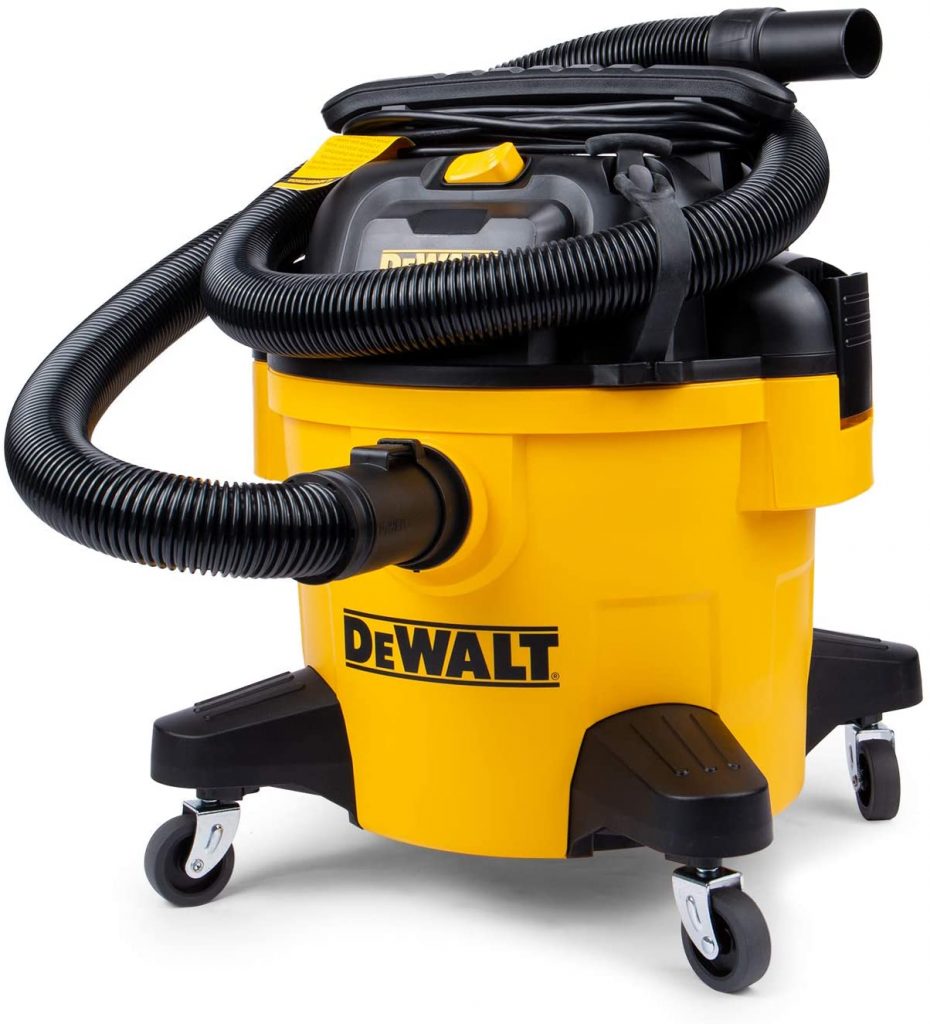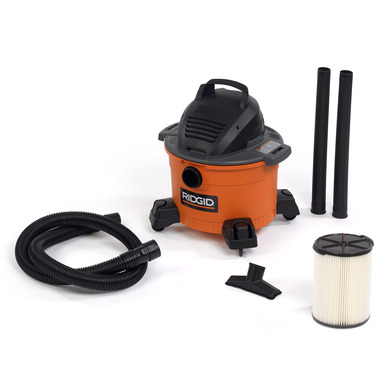Let’s face it–wet-dry vacuums are a great invention. This is because it is a product that will never go out of style or fashion. They are great for keeping your car clean, vacuuming clothes and mattresses, and spa/pool maintenance. This item is a must-have for any household!
But did you ever wonder how this machine works? Let’s find out by reading this article. Sit around and get ready to be astonished by the power of the wet-dry vacuum cleaner.
WHAT IS A WET-DRY VACUUM?

A wet-dry vacuum is a machine that can collect both liquid and dry materials with the same tank. These vacuums are great for use in situations where you need to pick up small amounts of fluid, such as when you’re cleaning up after a spill. They are also useful for picking up pet hair from carpets and furniture.
Wet dry vacuums work by sucking up liquids, mulch, dirt, mud, and other liquids through a hose connected to the machine. You can extend the hose up to 30 feet from the machine, which makes it easier to reach places where you might not otherwise be able to get to with just a regular vacuum cleaner.
HOW DOES IT WORK?
A wet dry vacuum cleaner works by drawing in air through its intake valve. The air is then pushed through the motor and into a hose, where it is filtered before being directed to the nozzle.
The water is drawn in through the dirty water tank and pushed out through another hose. As the water exits the dirty water tank, it flows into a filter that traps any particles or debris that might have been picked up during cleaning. The cleaned water is then returned to the clean water tank, ready for use again at a later date.
If the surface is dry, then the vacuum will suck up any dirt or debris that has accumulated there. If the surface is wet, then it will be sucked up along with whatever water is on the floor.
PROS AND CONS OF WET-DRY VACUUM
When you’re looking for a wet-dry vacuum, it can be hard to know what to buy. There are so many diverse brands and prototypes out there that it can be overwhelming. Some of these vacuums are inexpensive, while others are expensive and high-end. And they all supposedly do the same thing: suck up dirt!
But which ones should you choose? Well, that’s what we’re here for! In this section, we break down the pros and cons of wet-dry vacuums so that you can make a strong conclusion about which one is suitable for your needs.

? Pros of a wet-dry vacuum
>>It saves time (and money)
The time-saving feature of wet-dry vacuums is a definite pro. Vacuuming is a necessary and tedious task that can take up to an hour or more to complete, but not exactly the most enjoyable way to spend your weekend. With wet-dry vacuums, cleaning can be done in less than half the time because you don’t need to turn it off every few seconds to unload a bag or brush off dirt stuck inside your vacuum. You also won’t have clogged air filters from hair or dander, which means less maintenance overall!
As if saving time wasn’t enough, using a wet dry vacuum will save you money as well! A standard upright vacuum may cost hundreds of dollars, while many wet dry vacuums are priced at around $100-$150. However, keep in mind that some models require additional accessories such as extension wands ($10-$20), so it might not always be cheaper depending on what features you’re looking for.
>>Freedom from stress and anxiety
Stress and worry are not good for your health. Fortunately, there are ways to reduce these negative effects of stress and anxiety. A wet-dry vacuum is one such method that can help you relax, unwind, and have fun while also keeping your home clean.
>>A neat and organized workplace
A wet-dry vacuum is a terrific way to keep your workplace neat and organized. The best part about using one is that you’ll save time and money since you don’t have to hire someone for regular maintenance purposes. You can clean up after yourself in a flash, and the mess will be gone in no time!
>>Super easy to use
You can use this vacuum to clean up spills, clean up pet hair, and pick up dirt and dust. You can even clean your car with one! Some models of wet-dry vacuums have attachments that allow you to reach small corners, like the inside of your car’s glove compartment or under the seats, where crumbs tend to gather in abundance.
And if you’re deeming to be ambitious, you can even use a wet/dry vacuum for cleaning at home. The cordless nature of these machines makes them easy enough to bring upstairs when they don’t fit down the stairs easily, whether on a staircase or connecting two floors together with no stairs between them (like in my apartment complex).
>>Portable and versatile
A wet-dry vacuum is incredibly versatile. It can be used to clean up spills and messes on your carpet or hardwood floors. It can also be used to suck up pet hair, dust, and food that might otherwise end up in the trash or get tracked around the house until it eventually makes its way into your mouth (gross). The best part? They’re super portable! You can carry them with you anywhere you go, so long as there’s an outlet nearby. And who doesn’t want their own portable cleaning appliance at all times?
>>Easy maintenance
Wet-dry vacuums are easy to maintain or prolong their life. Though it may seem complicated due to its high-end appearance, you can still save your vacuum for years. Here is how you do it.
- Clean the filter.
The filters on wet-dry vacuums can be cleaned by simply removing them from the unit and rinsing them in warm water. If you don’t want to do this, you can also turn your vacuum over so that it is upright, then remove the filter and shake off any debris that has accumulated inside.
- Check the hose for damage.
Check your vacuum’s hose for cuts, tears, or kinks before using it again after cleaning your space with it. These may cause leaks in your machine or allow dirt to get through into other areas of your home or office without being sucked up by the machine itself! You should also check all around where there are joints between hoses/attachments. These areas tend to collect dust and grime really easily, so make sure they’re not clogged up before using them again too!
- Check for leaks at all times.
Don’t forget to check leaks during use as well as after cleaning jobs are done (this will prevent surprises later down the line). Suppose there’s no visible leakage happening right now, but something feels uncomfortable about how things fit together when connected together safely over time. In that case, chances are pretty good you’ll need some sort of maintenance done sooner rather than later!
? Cons of a wet-dry vacuum
>>It may not be very strong
If you’re looking for something to tackle the really big jobs, a wet-dry vacuum may not be up to the task.
This is because they’re not designed to handle heavy-duty cleaning, which means they can’t handle large amounts of water or absorbent materials like sawdust and dirt. If your needs are more limited, however, it’s worth considering whether a wet-dry vac might work well enough for you. There are many distinct models obtainable today that make light work of everyday tasks like cleaning up spills in the kitchen or deep-cleaning rugs in the living room.
>>Loud noise
The loudness of a wet-dry vacuum depends on the model. Most models are comparable in noise level to standard vacuums, and sometimes they can even be louder. If you’re worried about the noise level, select one that has a lower decibel rating.
Some people believe that the high frequency of sound waves from a wet-dry vacuum can damage their hearing if used for long periods of time or at full volume. However, these concerns have not been confirmed by scientific research and should be taken with a grain of salt. It’s best not to bother about it too much unless you notice any side effects yourself (such as ear pain).
If you want to reduce the volume of your machine, there are two easy ways: turn down its power switch or wear ear protection such as earplugs or headphones when using it.
>>Risk of electric shock
It’s important to unplug the vacuum before cleaning it. This is because there are no safety systems in place, so if you do get shocked, don’t panic! Just let go of the electrical cord that you’re holding and then try to roll out of its way (if possible). If you are in contact with the power cord, don’t touch anything else. If you aren’t touching anything else but still feel pain or tingling in your arms or legs (or anywhere), then stop what you’re doing immediately!
FREQUENTLY ASKED QUESTIONS
? What are typical applications for wet-dry vacuums?
To start with, you can use it to clean up spills. This is a great way to keep your home or office clean and organized. It’s also great for cleaning out the garage or car, especially when you’re looking for something that will be able to pick up any mess you might have made on your drive over there.
The beauty of these vacuums is that they’re so versatile: they can be used almost anywhere!
? How do I select the right size wet-dry vacuum for my application?
In order to select the right size wet-dry vacuum, you must first determine what it is that you are trying to clean up.
For example, if you have a small spill on the kitchen floor and want to clean it up quickly before guests arrive, then a small wet-dry vacuum may be sufficient for your needs. However, if you are cleaning up after a large party where there were lots of spills and messes all over the house, then a larger wet-dry vacuum would be more appropriate because it has more power and capacity than smaller ones.
Additionally, when choosing between different sizes of wet/dry vacuums, consider how much debris each model can hold at one time versus others on the market. This will help ensure that they don’t fill up too quickly during use!
? How do I prevent the motor from overheating?
If your wet-dry vacuum is designed to be used with liquids, it will have a motor that is designed to be used in wet conditions. If you use a wet-dry vacuum with a motor that isn’t designed for these types of conditions, the motor could overheat and cause damage.
If your vacuum has no information about whether or not it’s safe for liquids, look for the following features:
- A built-in water separator filter system – keeps the liquid from getting into your motor.
- Automatic shutoff feature when overloaded – this prevents overheating and allows you time to empty out the water before continuing use.
? How can I dispose of liquids collected by my wet-dry vacuum?
Now that you’ve collected all the liquids, what do you do with them? The answer is simple: dispose of them in a container and keep them out of sight (and smell) from others. You should not dispose of liquids in any drain or sewer because that can cause damage to your pipes and lead to serious health issues for people who live nearby. You should also avoid disposing of liquids down sinks and toilets, as they may clog these pipes as well.
Finally, be wary when disposing of water-soaked items like bedding. This will allow mold growth to spread throughout your home if left behind too long! The best way to avert this problem is by keeping a wet-dry vacuum handy. So when spills happen, they can quickly be cleaned up before they become more serious problems down the road.
? Can I use water to clean my filter?
The answer is yes, but only if your filter is completely dry. The purpose of the wet-dry vacuum’s HEPA filter (a type of filtration system) is to trap dirt and dust from the air and keep it out of your home. Particles can get trapped in all types of filters, but with a wet-dry vacuum’s HEPA filter, it’s important not to add water or detergent or chemicals on top of that.
If you want to clean your vacuum’s HEPA filter, we recommend using a plain old toothbrush or soft paintbrush along with water according to manufacturer instructions, no soap! It should be noted that it is not advisable using pressure washers on wet-dry vacuums. This is because they can cause damage to other parts of the unit as well as damage to surrounding areas due to the high water pressure being released from these devices when they’re used improperly by non-professionals who don’t know what they’re doing.
Do not wash your HEPA filter in the washing machine, either! This will void any warranty coverage for repairs related specifically to damaged components caused by improper care taken during usage/maintenance procedures following standard operating procedures outlined by manufacturers themselves.
FINAL WORDS
In the end, we recommend wet-dry vacuums because they have so many benefits. You can clean your home easily and quickly with one of these machines. They are lightweight, portable, versatile, and easy to use. However, if you don’t have much money or space available, then maybe this isn’t for you as it does cost more than other types of vacuum cleaners.

